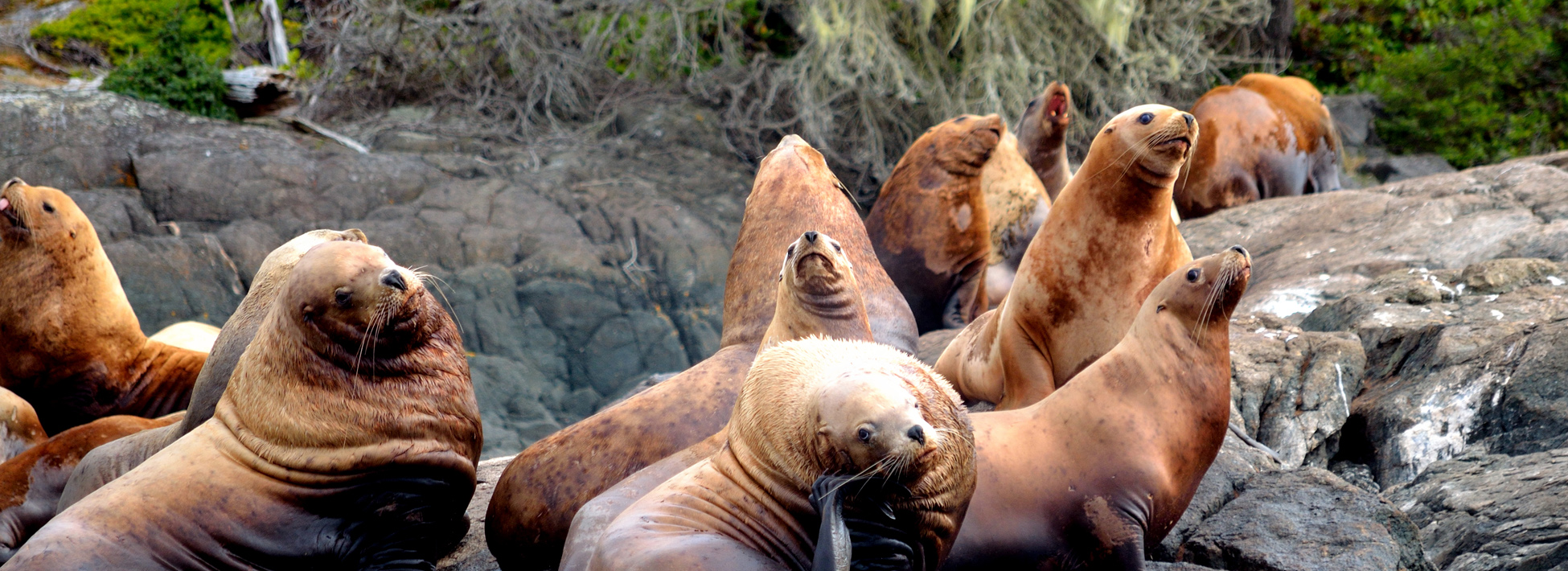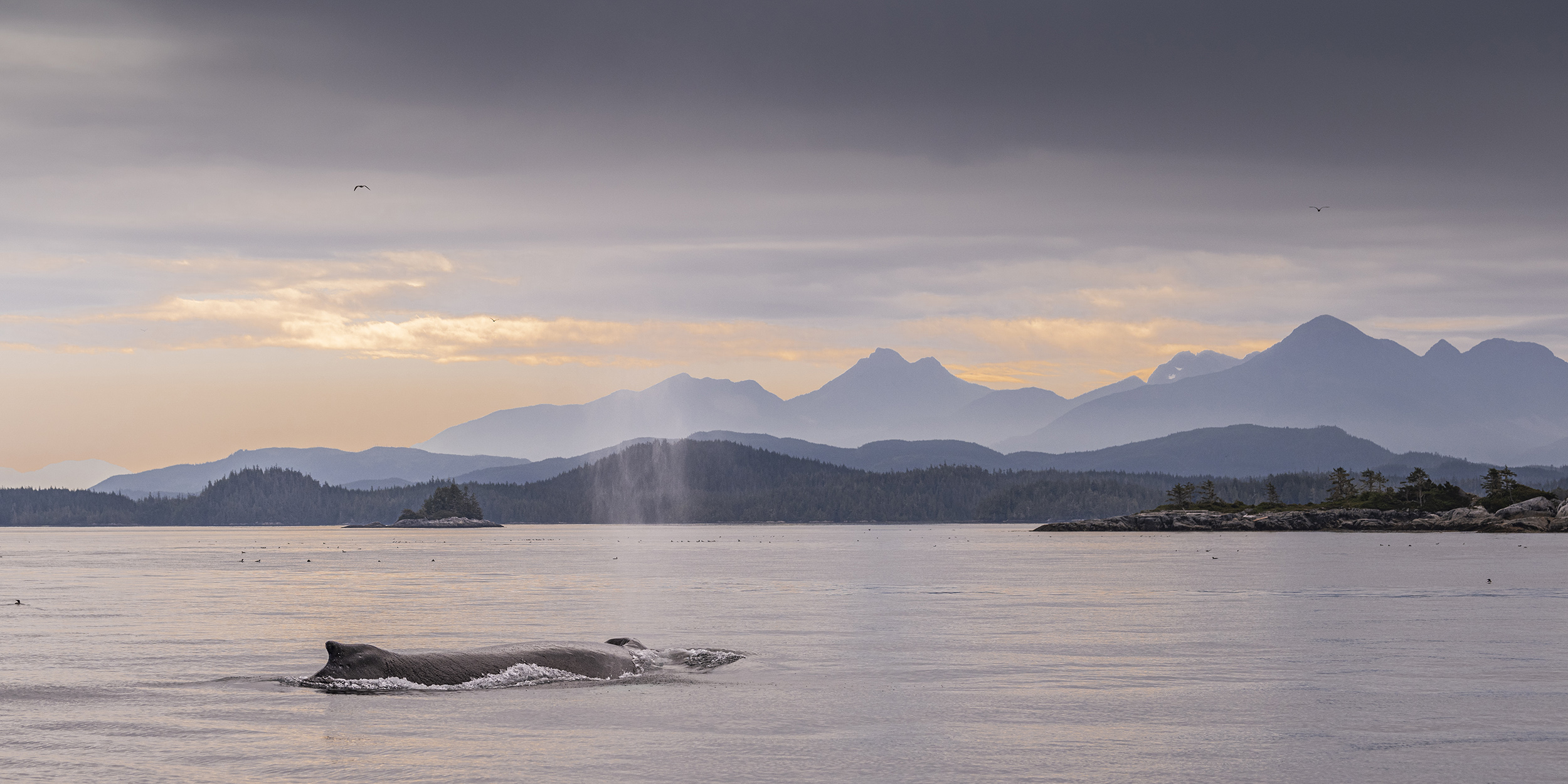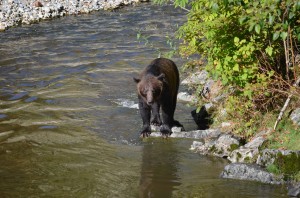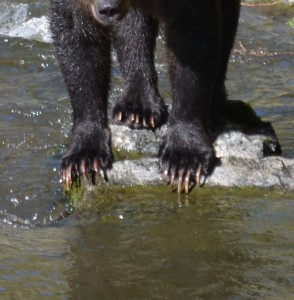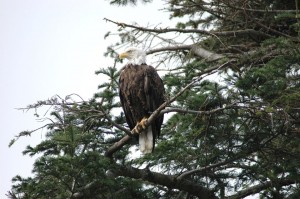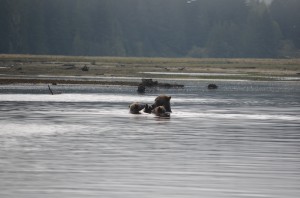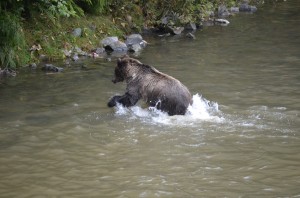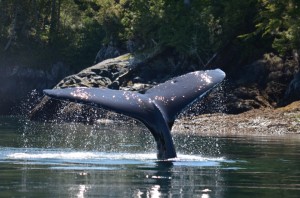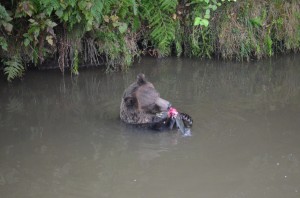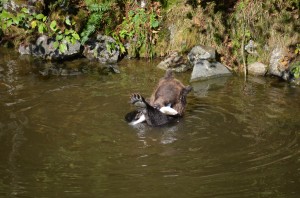
No this bear has not become so attached to the salmon it wants to cuddle the fish rather its front paw was injured in a fight and it is not able to hold the salmon. This bear got into a fight with a mother grizzly that had a cub close and came out second best. Its front paw cannot support any weight but it manages to catch and eat salmon and is putting on the necessary bulk to survive hibernation. Only time will tell if it will survive the winter but so far we have been watching it for over a month and all is well.
